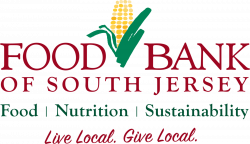DONATE
MONEY
YOUR GIFT MAKES A DIFFERENCE –
Whether you give a one-time gift, set up a recurring donation, or contribute through your donor advised fund or stock, every dollar helps provide meals and hope across South Jersey. Click the blocks below to explore all the ways to give.

DONATE NOW
In our region, 1 in 9 individuals and 1 in 7 children face food insecurity. Every dollar you give provides 2 meals to neighbors in need.

DOUBLE YOUR IMPACT
Matching gift programs can multiply your impact, helping us reach more neighbors. Find out if your company offers a match.

BECOME A MONTHLY DONOR
Join the Food Bank of South Jersey’s monthly giving program to help provide funding we can count on, and for those who count on us.

DONOR ADVISED FUND (DAF)
DAFs are one of the easiest and most tax-advantageous ways to give cash and non-cash assets to the charities you care about most.

START A FUNDRAISER
Rally your friends a family to support a cause close to your heart. Start a Virtual Food Drive today!

DONATE STOCK
By making a gift of stock, you may be able to give more than you thought possible while potentially realizing tax advantages.

LEAVE A LASTING LEGACY
Your planned gift or bequest will provide hope and meals to our neighbors in need for many years to come.

DONATE CRYPTOCURRENCY
Approximately 148,000 individuals face hunger in South Jersey. Helps us provide food & resources to those who need it most.

WANT TO LEARN MORE?
Please reach out to us! We’re happy to discuss how you can make an impact on South Jersey today. Let’s get started!
